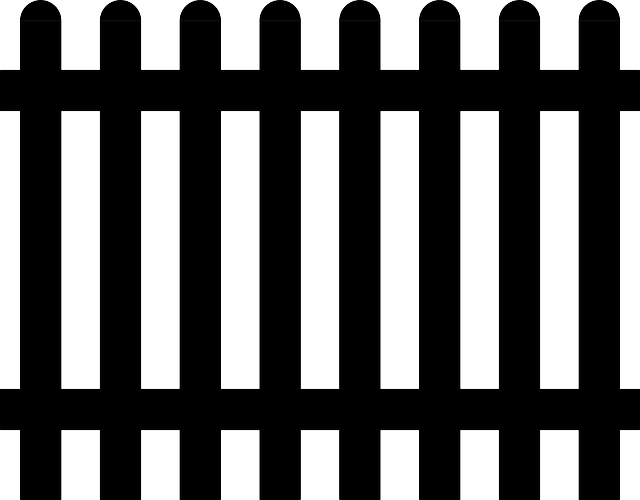Protecting Your Coastline, One Fence at a Time
Coastal areas present unique challenges when it comes to fencing. Salty air, unpredictable weather, and constant exposure to moisture can quickly deteriorate traditional fence materials. Durable wooden fencing offers an attractive and sustainable solution. This article delves into the benefits of long-lasting wood fences for coastal properties, exploring suitable species, expert installation tips, and essential maintenance practices to ensure your investment stands strong against the elements for years to come.
- Understanding Coastal Fencing Challenges
- Advantages of Durable Wooden Fencing
- Choosing the Right Wood Species
- Installation Tips for Longevity
- Maintenance and Care Strategies
Understanding Coastal Fencing Challenges
Coastal areas present unique challenges when it comes to fencing due to harsh weather conditions, including high winds, salty air, and regular exposure to moisture. Traditional fencing materials may not withstand these elements, leading to frequent replacements and increased maintenance costs. The primary concerns for coastal fencing include durability, resistance to corrosion, and the ability to hold up against the constant assault of salt water and strong winds.
Wooden fences, in particular, require specialized treatment to thrive in such environments. Regular, untreated wood can rot, warp, or become infested with pests like termites, all of which are accelerated by coastal conditions. Durable wooden fencing for these areas should be made from weather-resistant woods like cedar or treated with protective coatings and preservatives to ensure longevity. These solutions not only safeguard the fence’s structural integrity but also reduce maintenance requirements over time.
Advantages of Durable Wooden Fencing
Durable wooden fencing offers several advantages for coastal areas, making it an attractive and practical choice for homeowners and businesses alike. One of its key benefits is aesthetics; wood has a natural beauty that enhances outdoor spaces, providing a warm and inviting atmosphere. Unlike other materials, wood can be stained or painted to match any desired color or style, allowing for customization to suit individual preferences.
Additionally, durable wooden fencing provides excellent privacy and security without sacrificing light and air circulation. Its longevity is another significant advantage; with proper maintenance, wooden fences can withstand harsh coastal conditions, including salty sea air and frequent exposure to moisture, making it a cost-effective solution in the long run. This durability also reduces the need for frequent replacements, contributing to environmental sustainability.
Choosing the Right Wood Species
When selecting wood for coastal fencing, choosing the right species is paramount to ensure durability and longevity in a salty, humid environment. Different woods have varying resistances to decay, insects, and moisture, so understanding their properties is key. For example, treated cedar is a popular choice due to its natural resistance to rot and insect infestation. Redwood is another excellent option known for its high density and exceptional weatherability. On the other hand, softwoods like pine or spruce may be cheaper but tend to degrade faster in coastal conditions.
Considered a premium option, tropical hardwoods such as Ipe or teak possess exceptional durability and beauty. These woods are naturally resistant to both rot and insect damage, making them ideal for coastal environments. However, they can be more expensive and may require specialized treatments or finishes to enhance their protection against salt water and UV exposure. Proper wood selection, combined with adequate treatment and maintenance, will contribute significantly to the overall durability of your fencing in challenging coastal settings.
Installation Tips for Longevity
When installing durable wooden fencing in coastal areas, several tips can ensure longevity. First, proper preparation of the fence line is crucial; clear the area of debris and ensure the ground is level. This step lays the foundation for a sturdy fence. Additionally, using pressure-treated wood specifically designed for outdoor and coastal environments is essential to protect against moisture and salt air, which can accelerate wood decay.
During installation, make sure posts are deeply embedded in concrete to withstand harsh weather conditions. Use metal brackets to reinforce connections between posts and rails, preventing warping or rot. Regular maintenance, such as re-staining or sealing the fence every few years, will further extend its lifespan.
Maintenance and Care Strategies
Maintaining durable wooden fencing in coastal areas requires a thoughtful care strategy. Regular cleaning is essential to remove salt spray and other marine deposits that can weaken the wood over time. A soft brush or cloth, combined with fresh water and mild soap, is ideal for this task. Avoid using harsh chemicals as they may strip away the protective finish or even damage the wood.
Inspecting your fence for any signs of rot, pest infestation, or damages should be a monthly routine. Addressing issues promptly will prevent minor problems from escalating into major repairs. Repainting or re-staining the fence every few years is recommended to maintain its aesthetic appeal and protective barrier against the harsh coastal environment. Keep in mind that natural weathering is part of the charm of wood, so some changes in color and texture are to be expected over time.
